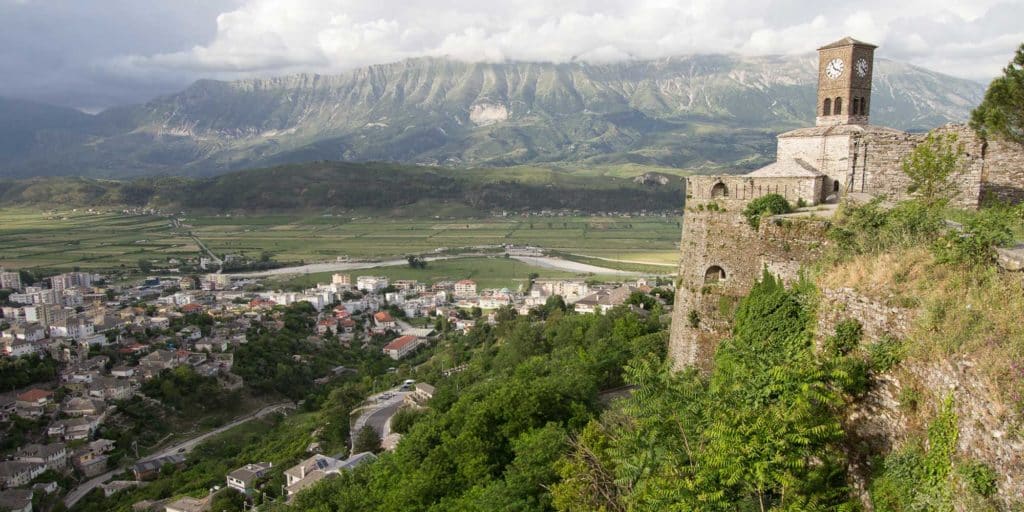
Albania Port Authority, this is sailing vessel Champagne requesting permission to enter harbor.”
Radio silence.
This was now our fourth time trying to hail the local authorities, something we were instructed was necessary prior to arrival.
“Albania Port Authority, this is sailing vessel Champagne. Do you copy?”
More radio silence.
“Champagne, this is your port agent, please proceed into the harbor and to the commercial dock. We have secured a berthing space for you. You will need to enter stern-to alongside the passenger ferry and use your anchor. Someone will be on the dock to catch your lines.”
“Good, copy. Thank you very much; see you soon. Champagne clear.”
Albania was the first country we’ve visited that requires the use of a third-party agent in order to clear in, and although we initially felt miffed about it, we ended up being grateful. The agency we chose, Saranda Summer Tours, is run by a husband-and-wife team, Gazmend Demiri and Jelja Serani. Jelja, who knows English and typically handles communications, called us back on the radio when the local authorities failed to do so and ensured Gazmend would be waiting to help on the dock. Extra hands are always welcome when docking, but especially so for us, considering that we had never actually berthed stern-to using our own anchor to keep us off the seawall — so called Med mooring.
Heck, we still weren’t even comfortable maneuvering our boat in reverse. But then I saw a man on the dock vigorously waving his arms at us and indicating where we were to direct the boat. You’ve got to be kidding, I thought. Not only did we need to back in while strategically paying out just the right speed and amount of anchor chain, but our spot was whittled into the deepest hole on the dock, between a massive 150-plus-foot pirate-looking tourist boat and a string of brand-new 50-foot sailing yachts. I felt like closing my eyes and crossing my fingers, but figured that my wife, Clare — on the helm — might want a little more active participation.
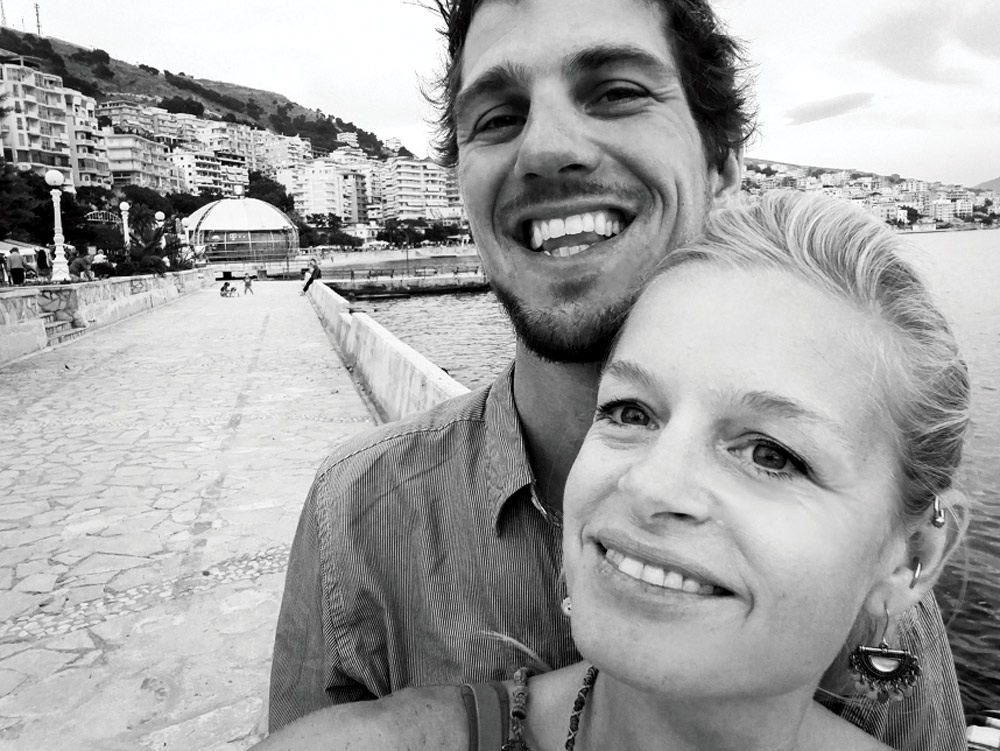
Of course, none of the dock-bound onlookers knew that this was our first time Med mooring, and we were so nervous that we couldn’t even yell at each other, which had the effect of making us seem all the more cool and comfortable. Miraculously, beginner’s luck served us without flaw, and before we knew it, our trusty steed was all nestled up in its hole, having not rubbed a single fender among the lot. Wow, did we just do that? No time for celebration though; Gazmend was politely amusing himself by looking off into space as he waited for us to gather our passports and boat documents and step ashore.
RELATED: Learning to Sail in the Mediterranean Sea
In Saranda, the commercial port offered the only berthing space available for visiting private craft. All traffic to and from the dock must invariably pass through the offices of customs and immigration. Tall wrought-iron fences corralled us into the intimidating three-story building, where uniformed officers were milling about, apparently with not much to do. Our agent offered a few words and a wave, and without even breaking stride — forget about showing identification — we were permitted to bypass the checkpoint luggage scanner, climb the inoperable escalator, pass through the glass doors, skirt around the manned vehicle-gate booth and gain the streets, which were bustling with souvenir shops, kabob cafes and packaged-tour outfits.
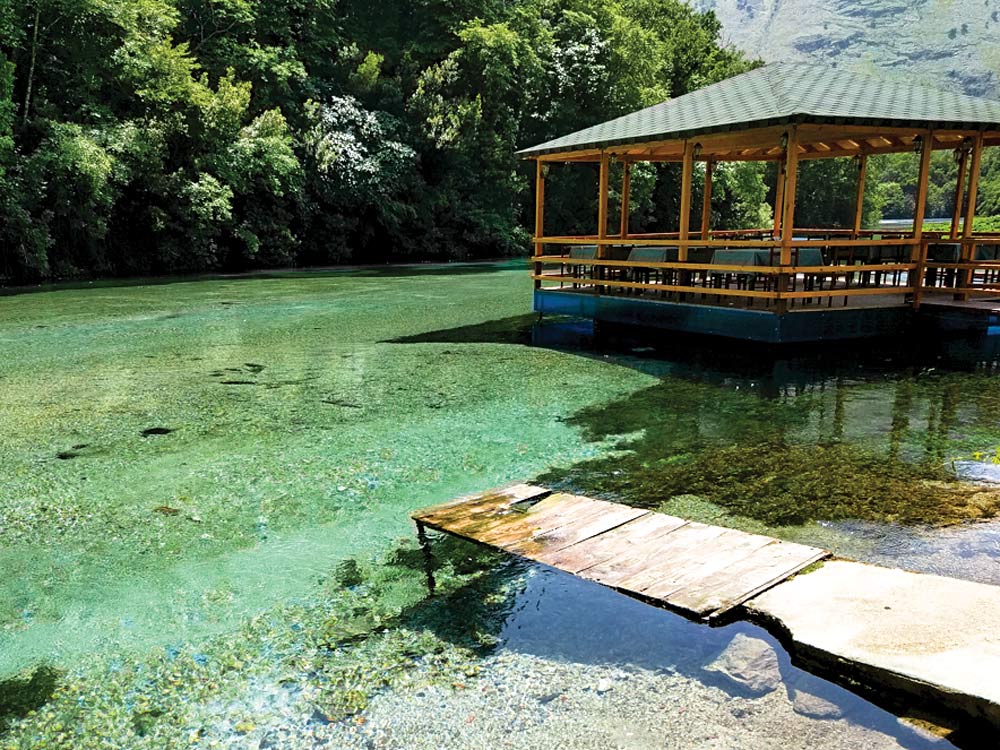
The booming tourist infrastructure of Saranda sprouted from Soviet bloc-era concrete in the past decade, with Albania now further settling into its reimagined post-communism identity. Although this seaside town has long served as a domestic holiday getaway for mountain-bound Albanians who are able to afford a week at the beach, its proximity to Corfu, Greece — just a handful of nautical miles away — means there is a much larger Western market available, and it’s now plainly evident that Albanians are hungry to capitalize.
RELATED: Hidden Croatia, a Crossroads of European History
We followed Gazmend up the road into his office and took a seat while he went to work behind a computer. He and Jelja noticed the writing on the wall some years ago and started Saranda Summer Tours. Although they offer a variety of services for all foreigners, they specialize in assisting visiting yachts. Not only can they both properly cleat a dock line, but they are familiar with many of the specific concerns of cruising sailors — how to get water and fuel, where to land a dinghy, what VHF channels to monitor — and are quick to go the extra mile with personal assistance.
Everything was sorted within a half-hour, and we departed with a map in hand that was marked with local recommendations. Jelja accompanied us back to the immigration building, met an officer on our behalf and within minutes returned our freshly stamped passports. We were now free to go as we pleased. Geez, that was easy, I thought. Now I almost wish more countries required the use of an agent.
We returned to fully settle the boat and clean ourselves up before heading out for an early evening stroll. As mentioned, the only way from the dock to the street was through the customs and immigration building, and at first we were uncertain of the protocol and whether we needed to show our passports. The staff seemed quite relaxed, however, and usually permitted our passage after looking up from their smartphones to offer a simple nod — easy enough.
In contrast, we were once asked to have our bags X-rayed, but the plan was quickly abandoned when the officer noticed a rainbow assortment of fresh produce spilling out from our day’s shopping. On another occasion, we were stopped by a guard we hadn’t seen yet, but after seeming to catch the word sailboat during our explanation he waved us through.
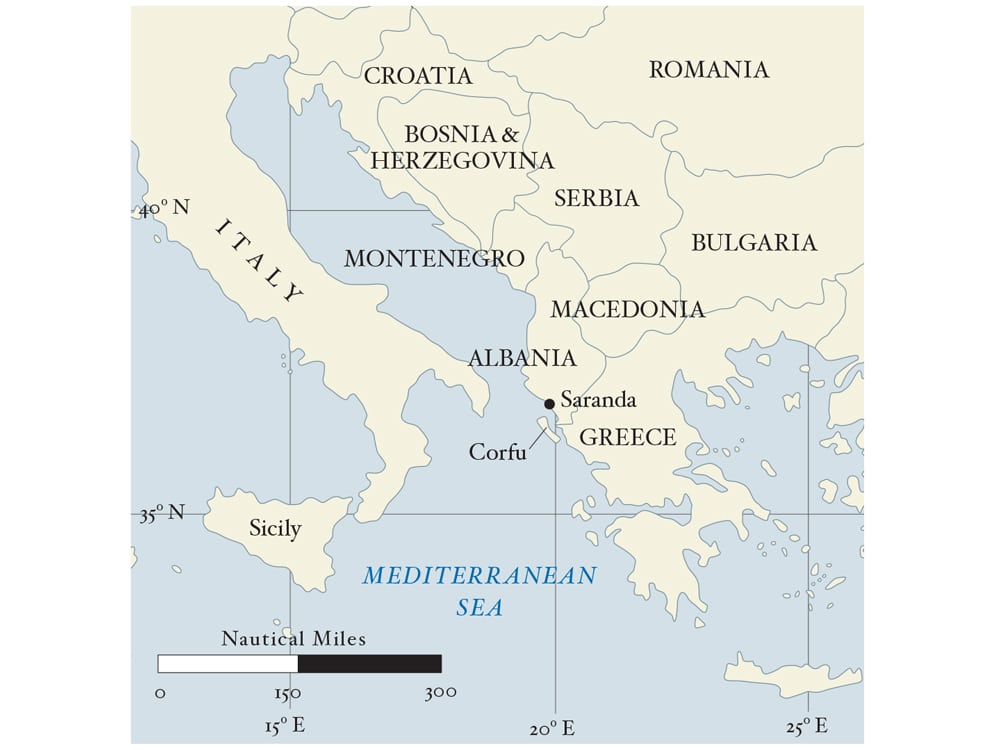
Before our arrival here, I couldn’t have pointed out Albania on a map. Clare, of course, has already been here before. She’s well-traveled, and it’s a continual struggle to find places she’s yet to visit — she even has an Albanian hip flask to prove it. But if you’re like me and new to Albania, you might be surprised at your good fortune of landing on these shores.
Not only will you save a pocketful of cash while sipping umbrellaed cocktails from a seaside beach chair, but being outside of the European Union also means that time spent in Albania doesn’t count against your tourist-visa allotted time within Schengen Agreement countries. Most surprising and striking to me, however, was the dramatic beauty of the lush and rugged countryside. I never expected Albania to be so naturally stunning.
We hired a car for a day — another task made easy by our new agency friends, who didn’t even require looking at a driver’s license — and drove into the dominating mountains set just behind town. A turnoff onto a gravel road led to the noted Blue Eye, an underground spring that brings crystalline waters up to the surface. Surrounded by lush hillsides and engulfed by the sounds of bubbling water and buzzing insects, it felt as if we had stumbled into a lush jungle sustained by crisp, clean mountain air — a very welcome contrast to the hazy, gray, salt-sticky sea level humidity we were so accustomed to.
The highway continued up, switchbacking profusely before gaining a narrow pass and then a long descent down into a fertile river valley, which was undoubtedly the glacial handiwork of a former ice age. Verdant spring-blossoming fields lined either side of a river that tumbled its way to lower ground. Another hour of driving along this river brought us to the ancient town of Gjirokaster.
Worthy of any postcard, the town is composed of an undulating series of humble buildings, clad under slate-stone roofs that climb their way up the hillside. A castle is perched atop, offering stunning views all around. But before you enjoy the vistas, take a tour through the so-called Cold War tunnels, a network of underground offices and passageways that served as the administrative center for the whole region, and were kept secret from both the Soviets and the Yanks, who were each volleying Albania for strategic advantage.
“One tunnel even leads all the way through the mountain to the next village over,” our guide, Eni, said during his tour, “and these underground compounds exist all over the country.”
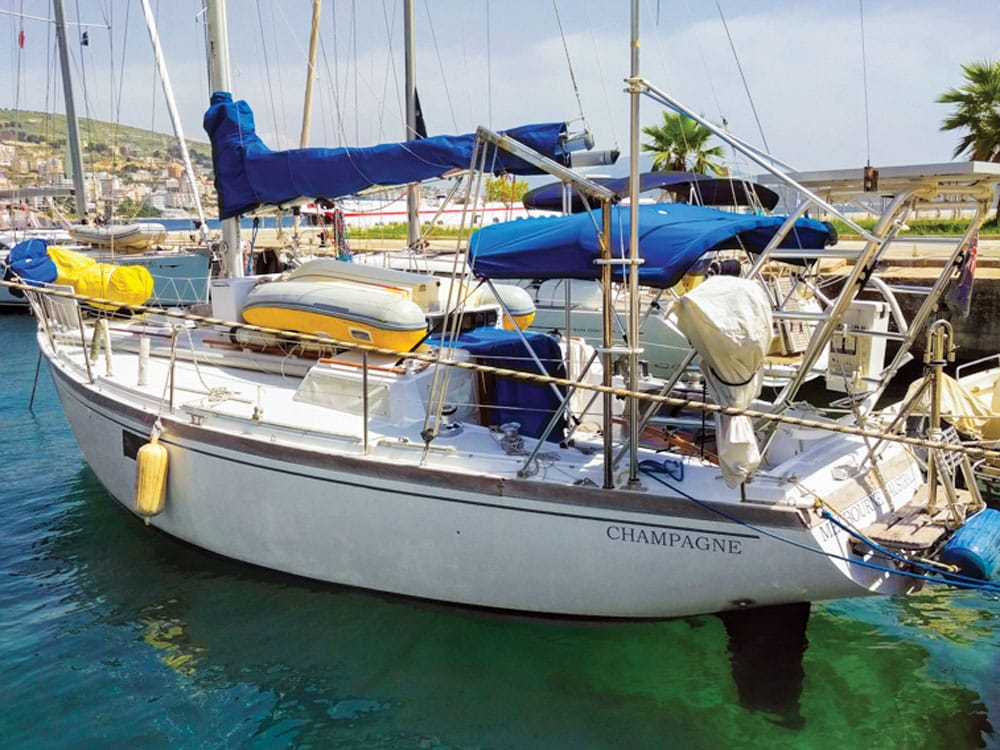
It’s difficult to imagine such sinister times in a town now well established on the country’s burgeoning tourist checklist. Even the prime minister was here for a visit when we pulled up — hence all the sunglasses-adorned business suits and black sedans that ensure no parking spaces are available. No matter — the town is so steep that it is best explored on foot.
On the way home, we took advantage of a big highway supermarket to re-provision Champagne on the cheap. It’s a long drive back in the dark, but that didn’t stop us from getting up early the next morning to visit the exquisite archeological site of Butrinti. The remains of this ancient village lie on yet another dramatic natural landscape, this one several miles up a coastal estuary amid a vibrant wetlands surrounded by rolling hills. Our next destination, Corfu, was visible across a narrow stretch of sea.
With more time, we would have lazed on the beach at nearby Ksamil, a turquoise-watered enclave that we cheekily motored through on our way up to the port of Saranda prior to our original check-in. In fact, our agent Jelja gave us a surprising reprimand for taking that sneak peek when we met in her office that first day.
“We saw your vessel on AIS stray into Ksamil waters, which is not allowed. You must first proceed directly to Port Saranda!”
Maybe this explained the small but powerfully armed Albanian navy craft we saw hovering discreetly outside the main harbor as we passed by trying to establish contact with the port authority? That patrol boat made a lazy turn and casually trailed our heading until, at last, Jelja called back with further instruction.
We apologized for our misdeed — Clare, not one to readily break rules, was especially embarrassed — but I couldn’t help but feel a bit unnerved because I could have sworn that our AIS transceiver was turned off during that entire voyage.
Certainly a country has every right to track the movements of visiting craft, but maybe this served as a startling example of a lasting legacy. Although Albania has long cast off the cloak of totalitarianism, perhaps Big Brother still manages to hide in the closet? But don’t let any paranoia stop you from visiting this beautiful country. It might be slow to respond, but it’s quick to welcome.
Zachary Krochina is a born-and-raised Alaskan who found his Australian mate in the Florida Keys, where they bought and revitalized an old sailboat with the intention of sailing to the land Down Under. Evidently not in a rush, they crossed the Atlantic, and are currently exploring the Med. You can follow their journey at bottlehalffull.org.








